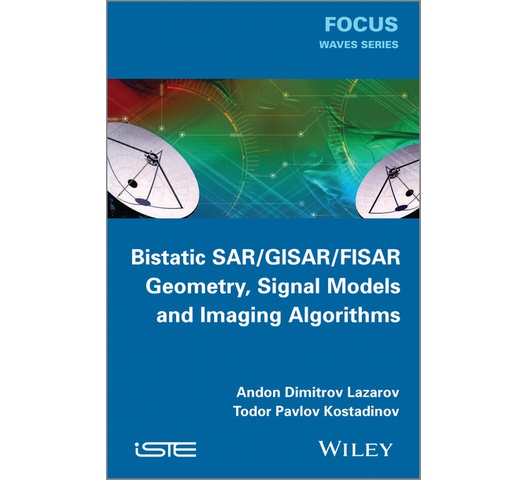
Bistatic SAR / GISAR / FISAR Geometry, Signal Models and Imaging Algorithms
by Andon Dimitrov Lazarov, Todor Pavlov Kostadinov
This book provides a general theoretical description of such bistatic technology in the context of synthetic aperture, inverse synthetic aperture and forward scattering radars from the point of view of analytical geometrical and signal formation as well as processing theory. Signal formation and image reconstruction algorithms are developed with the application of high informative linear frequency and phase code modulating techniques, and numerical experiments that confirm theoretical models are carried out. The authors suggest the program implementation of developed algorithms.
A theoretical summary of the latest results in the field of bistatic radars is provided, before applying an analytical geometrical description of scenarios of bistatic synthetic aperture, inverse synthetic aperture and forward scattering radars with cooperative and non-cooperative transmitters. Signal models with linear frequency and phase code modulation are developed, and special phase modulations with C/A (coarse acquisition) and P (precision) of GPS satellite transmitters are considered. The authors suggest Matlab implementations of all geometrical models and signal formation and processing algorithms.
Contents
1. Bistatic Synthetic Aperture Radar (BSAR) Survey.
2. BSAR Geometry.
3. BSAR Waveforms and Signal Models.
4. BSAR Image Reconstruction Algorithms.
5. Analytical Geometrical Determination of BSAR Resolution.
6. BSAR Experimental Results.
7. BSAR Matlab Implementation.
A general theoretical description of bistatic technology within the scope of synthetic aperture, inverse synthetic aperture and forward scattering radars from the point of view of analytical geometrical and signal formation and processing theory.
Signal formation and image reconstruction algorithms are developed in this title, with application of high informative linear frequency and phase code modulating techniques. Numerical experiments that confirm theoretical models are carried out and the authors suggest program implementation for the algorithms developed.

Reviews
This product does not have any reviews yet.
Add your review
